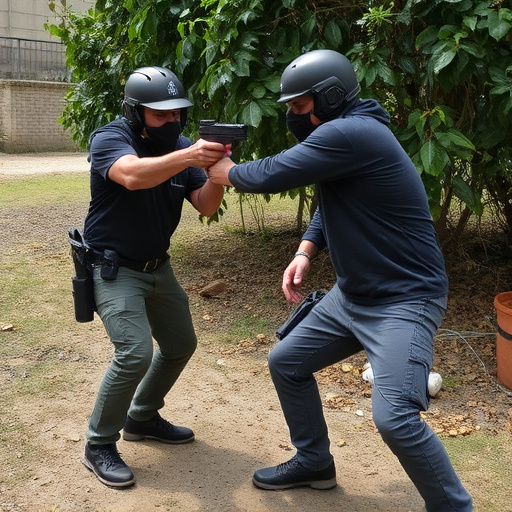Compact stun guns offer runners a powerful yet lightweight self-defense tool for enhanced outdoor safety. These devices, legal in many regions with proper regulations, provide non-lethal force to deter threats and empower individuals during remote activities. While beneficial, responsible use requires understanding power limits and local laws to avoid harm or legal issues.
“In today’s world, personal safety is paramount, especially for avid runners who frequently traverse alone. This article explores the compact stun gun as a potential solution for enhancing runner’s safety. We delve into its key features, understanding how these devices work, and examining power, range, and safety considerations that debilitate their effectiveness. Additionally, we explore real-world applications, legal aspects, and provide insights on carrying and using a stun gun responsibly.”
- Compact Stun Gun: Key Features and Benefits for Runners
- Understanding Electrical Charge Weapons: How They Work
- Debilitating Factors: Power, Range, and Safety Considerations
- Runner's Perspective: Carrying and Using a Stun Gun
- Legal Aspects: Regulations and Permits for Stun Guns
- Case Studies: Real-World Applications and Success Stories
Compact Stun Gun: Key Features and Benefits for Runners
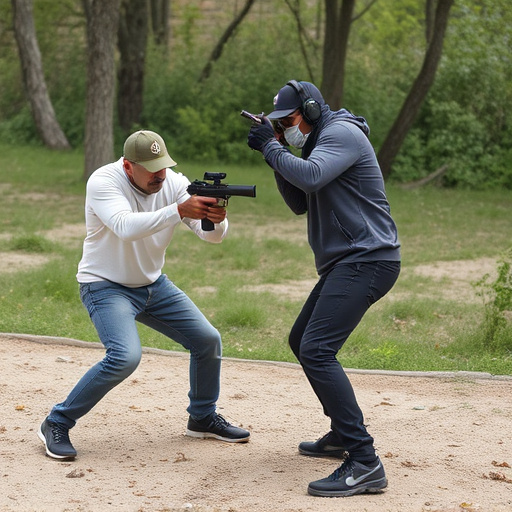
Running is a beloved activity for many, offering both physical and mental health benefits. However, it’s essential to consider potential risks when venturing into isolated areas or facing unexpected dangers. This is where a compact stun gun emerges as a valuable tool for runners seeking enhanced safety.
These specialized devices pack a powerful punch in a small, lightweight package. Designed with mobility in mind, they fit easily in a runner’s pocket or vest, ensuring quick access during emergencies. The key features include high voltage output, offering a safe yet effective means to deter aggressors while providing crucial seconds to escape. Their compact size and ergonomic design make them user-friendly, allowing runners to focus on their well-being without compromising performance.
Understanding Electrical Charge Weapons: How They Work
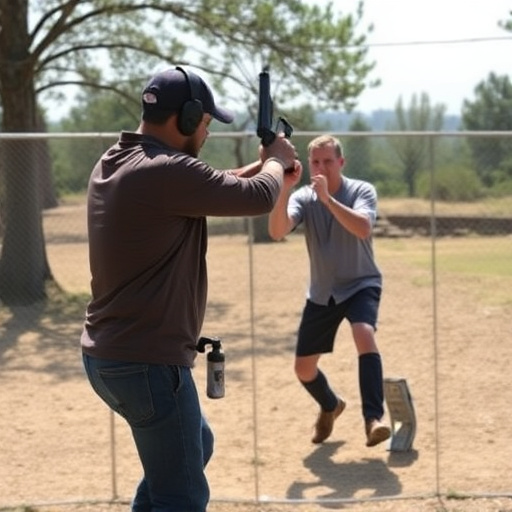
Electrical charge weapons, often referred to as stun guns or Tasers, are non-lethal devices designed to temporarily incapacitate a target through the delivery of an electric current. Unlike traditional firearms, these weapons do not use bullets but rather rely on powerful electrical pulses to disrupt muscle control in the body, causing temporary paralysis and disorientation. The concept behind their functionality is straightforward: by applying a high-voltage, low-current electrical charge to the body, the device interferes with the nervous system’s normal function, resulting in muscular rigidity and loss of balance.
For runners and outdoor enthusiasts, compact stun guns can serve as an effective personal safety measure. Their small size allows for easy carriage, ensuring individuals have a means of self-defense within reach. These devices are particularly useful in situations where one might encounter aggressive animals or unexpected attacks during outdoor activities. The non-lethal nature of stun guns makes them a preferred option for those seeking to deter potential threats while minimizing harm and allowing time for escape or help to arrive.
Debilitating Factors: Power, Range, and Safety Considerations
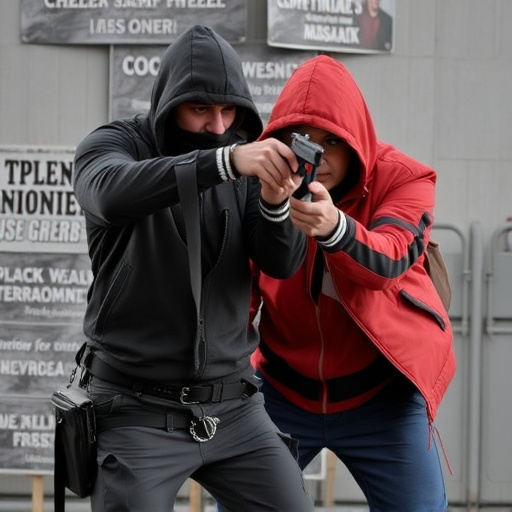
In the realm of personal safety devices, the compact stun gun has emerged as a powerful tool for runners and outdoor enthusiasts seeking to deter potential threats. However, when considering its effectiveness as a debilitating electrical charge weapon, several critical factors come into play. Power is a key aspect; these devices deliver a high-voltage, low-current shock that can temporarily incapacitate an attacker, but the intensity must be balanced to avoid causing severe harm or permanent damage.
Range is another essential consideration for runners who may face unexpected challenges in remote areas. While stun guns offer a non-lethal solution, their effective range is typically limited. This means users must be in close proximity to deploy the weapon effectively. Additionally, safety considerations cannot be overlooked. Proper training and understanding of local laws are vital to ensure responsible use, as misuse or unexpected deployment could result in serious injuries or legal repercussions, especially with compact stun guns designed for runners’ safety.
Runner's Perspective: Carrying and Using a Stun Gun
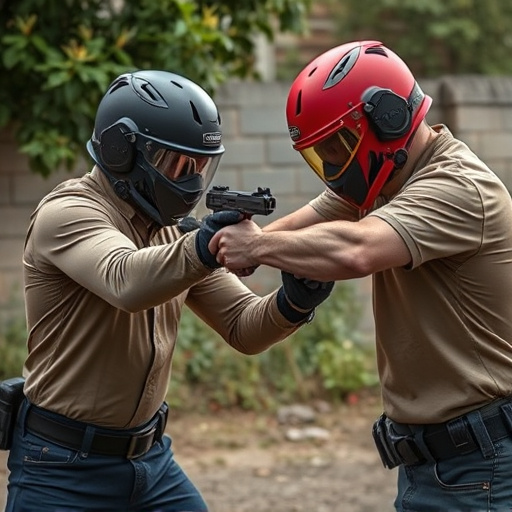
Running, an activity many embrace for its health benefits and mental clarity, presents unique challenges—especially when navigating unfamiliar terrains or facing unexpected dangers. This is where a compact stun gun for runners’ safety becomes an appealing tool. Its small size allows runners to easily carry it on their person, discreetly ensuring peace of mind during their daily jogs or trail treks.
For those new to stun guns, the experience can be empowering. A quick press of the trigger delivers a powerful electrical pulse, temporarily incapacitating a potential assailant while giving the runner time to escape and summon help. However, proficiency is key; proper training and practice are essential to ensure effective use in an emergency situation.
Legal Aspects: Regulations and Permits for Stun Guns
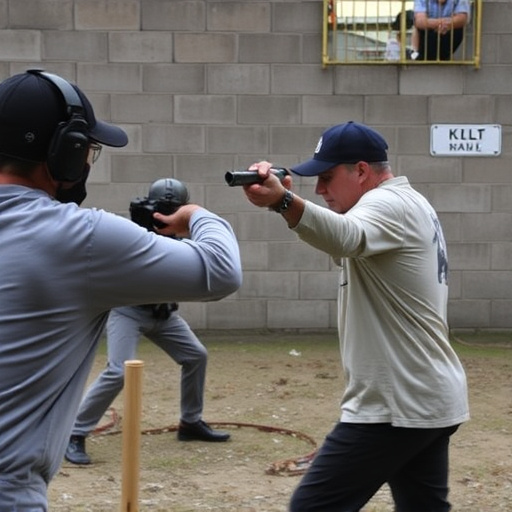
In many regions, possessing a stun gun for personal safety is legal as long as it adheres to specific regulations and power restrictions. These compact stun guns, often favored by runners and outdoor enthusiasts, are designed to deliver a powerful electrical charge while maintaining a relatively low voltage, typically below 1200 volts. Users must ensure they operate within the permitted limits set by their local laws, which usually involve obtaining licenses or permits.
The legal landscape surrounding stun guns varies widely across countries and states. Some jurisdictions allow open carry with minimal restrictions, while others mandate permit-based usage. Runners considering a compact stun gun for safety should thoroughly research their area’s regulations to understand the required permits, if any, and the specific power levels permitted to remain compliant with the law.
Case Studies: Real-World Applications and Success Stories
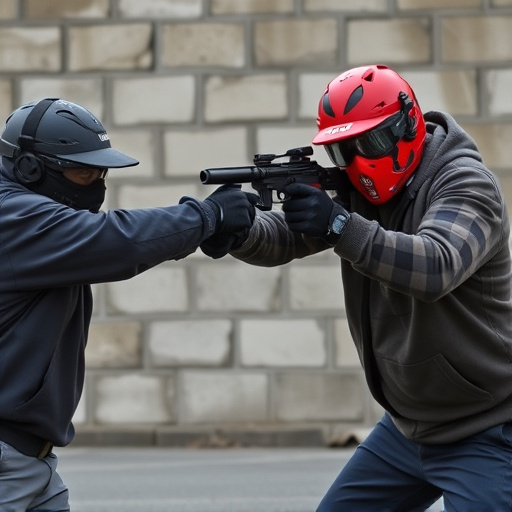
In recent years, there has been a growing interest in compact stun guns as a means of personal safety, particularly among runners and outdoor enthusiasts. Case studies from various regions highlight their effectiveness. For instance, law enforcement agencies in urban areas have successfully deployed stun guns to subdue assailants without resorting to lethal force, demonstrating their potential in high-stress situations.
Real-world applications extend beyond the police force. Runners and hikers have shared success stories of using compact stun guns to deter potential attackers during night runs or in remote trails. These devices offer a non-lethal yet powerful response option, providing users with confidence and peace of mind while engaging in activities where safety might be a concern. The compact size and ease of use make them an appealing choice for personal defense, especially when paired with proper training and awareness strategies.
In conclusion, while a compact stun gun can offer enhanced safety for runners, it’s crucial to understand its debilitating factors, including power output, range limitations, and safety considerations. As with any self-defense tool, proper training and adherence to legal regulations are paramount. Despite its compact size, users must be aware of the weapon’s reach and energy delivery to ensure effective deterrence in emergency situations. Remember, a stun gun is not a substitute for situational awareness and personal safety precautions while running.
